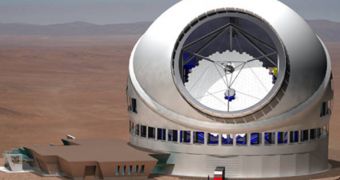A venture between two American universities and a group of Canadian ones will result in one of the largest and most powerful ground-based telescopes in the world by 2018. At a project diameter of 30 meters (98.5 feet), the mammoth telescope will be constructed atop Mauna Kea, in the US island of Hawaii. This location won a contest involving about five others, among which spots in Chile, a preferred destination for telescope builders.
The California Institute of Technology (Caltech) and the University of California, for the US, and a Canadian university group called ACURA will develop the telescope, which is estimated to cost more than $300 million. The cost will be covered with grant money from the Gordon and Betty Moore Foundation, the project leaders have recently announced. The new, 30-Meter Telescope (TMT) will have prestigious “neighbors,” including the Keck and Subaru observatory, built on the same mountain.
“In the final analysis, the board selected Mauna Kea as the site for TMT. The atmospheric conditions, low average temperatures, and very low humidity will open an exciting new discovery space using adaptive optics and infrared observations,” Caltech Physicist Edward Stone explains about the decision. He is also the TMT board vice chairman. He made the announcement in a press release on Tuesday, Wired reports. The runner-up location was Cerro Amazones, in Chile.
According to experts, the new telescope will exceed even Hubble's observation power in many regards, with all of its new upgrades considered. This opens up an exciting promise for space exploration, and TMT could yield fresh, new images of known objects, only in a far greater detail than ever before. “We are excited about the prospect of being the first of the next generation of extremely large telescopes,” the Project Director for the Canadian Large Optical Telescope, Professor Ray Carlberg, says. He is also a member in the TMT board.
All that remains before the construction starts is for the state to approve it. However, the developers still need to raise some $100 million, so as to cover the total costs of the construction. At this point, the new instrument is scheduled to be completed in 2018. Plans are to create an observatory able to survey the skies in the ultraviolet- to the mid-infrared-wavelength ranges, an ability that is fairly rare among large telescopes. These instruments are usually designed to be proficient in a single range of wavelength, as in, for example, infrared, visible light, near ultraviolet+visible light, gamma-rays, and so on.

 14 DAY TRIAL //
14 DAY TRIAL //